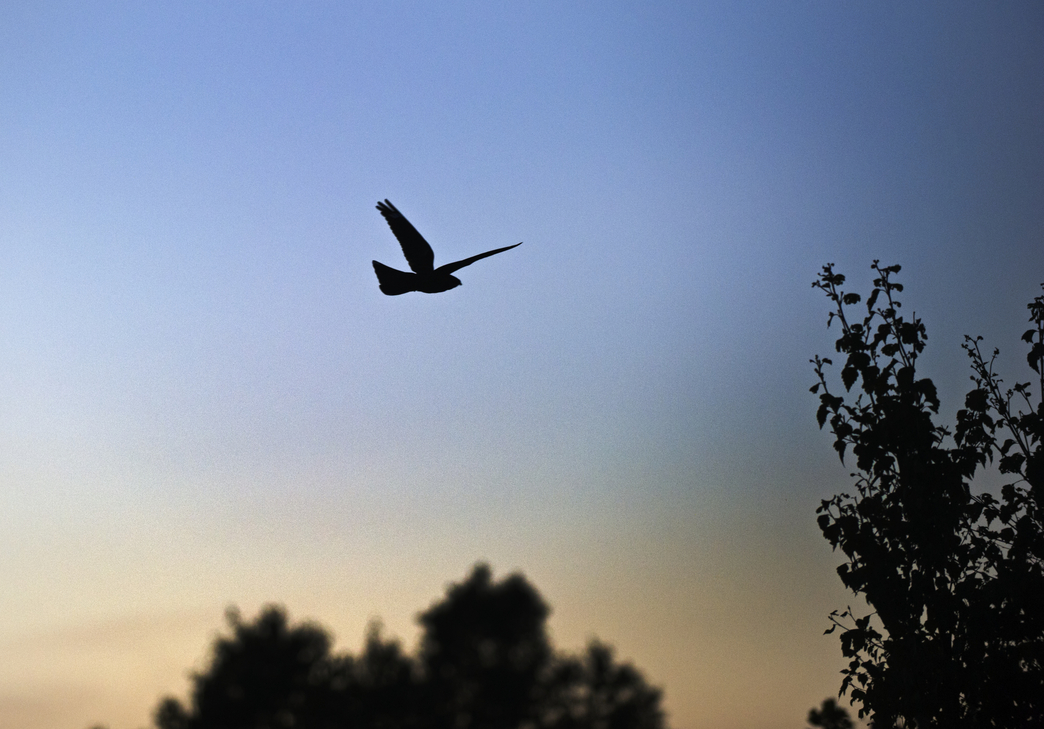Late summer is the best time to discover one of the UK’s chunkiest caterpillars, the Elephant Hawk-moth. Photo – Elephant Hawk moth caterpillar © Alan Price
Pretty in pink
Hawk-moths are arguably our most impressive moths. They’re big and often boldly patterned. You can find them drawn to lights, or sometimes stumble across them resting on posts, trees, or walls. But even amongst the hawk-moths, there’s one that’s a real fan favourite. It’s flamboyantly dressed in pink and olive-green, has a 3cm-long forewing, and is named after one of the world’s most massive mammals!
The Elephant Hawk-moth is found across the UK, in a range of habitats including woodlands, parks and gardens. The eye-catching adults are on the wing from May until August. They’re easily attracted to lights, or can sometimes be spotted from dusk, feeding on open flowers like Honeysuckle.

Elephants and eye spots
Looking at the adult moth, it’s hard to imagine how it earned the epithet of elephant. Sure, they’re big, but they’re far from the largest hawk-moth in the country. To solve that mystery, we have to seek out a caterpillar. When they’re fully grown, Elephant Hawk-moth are one of the largest and most distinctive caterpillars you’re likely to find.
They grow to around 8cm long, are chunky, and usually brown with darker markings that give them a slightly wrinkled look. As a result, they do look a bit like an elephant’s trunk! Like other hawk-moth caterpillars, they have a short ‘horn’ on their rear, which has a white tip. But their most distinctive features are the large eyespots just behind the head. There are two on each side of the body, black circles with a paler crescent within. These large, fake eyes help put off potential predators. To add to the effect, the caterpillars can partially retract their actual head – giving them the look of a cartoon snake.
Where there’s a willowherb, there’s a way
Many caterpillars have a favourite food and Elephant Hawk-moth are no exception. Though they can be found feasting on a wide range of plants, including balsams and bedstraws, they’re usually discovered on willowherbs and fuchsias. They’re not always easy to spot, as they do much of their feeding at night.
When they’re small, the caterpillars are green and well-camouflaged. They often spend the day tucked under a leaf on their chosen plant. As they grow and adopt their trunk-like appearance, they start to commute instead. They spend the day resting on the ground at the base of the plant, travelling up the stem to feed when it gets dark. On warm days they may sometimes rise a little earlier to spend the afternoon basking in a prominent position.

Trunk and disorderly
Though Elephant Hawk-moth caterpillars can appear as early as June, they often go unnoticed until late summer. By this point, they’re larger and more easily spotted. However, what really starts to give them away is their habit of wandering. In August and September, fully fed caterpillars leave their foodplant and crawl off in search of a place to pupate. They do this in a cocoon in leaf litter or in the soil, just below the surface. Their wandering ways often take them over lawns, paths, and patios. They’ll pass the winter as a pupa, emerging as adults in late spring to start the cycle over again.



